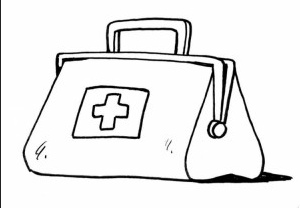
Here are some practice models that solo physicians are considering for their Single Shingles.
The Retainer-Based Practice
Although the retainer-based practice has many other names, calling it retainer medicine seems to be the most generic way to describe direct care, or care that patients pay for directly without the intervention of a third-party payer source. There are as many variations of retainer-based practices as there are name variations, but the three main types are listed below.
Retainer: Fee for Extra Services Model
It is not unusual for practices to implement a “fee for extra services” model for Medicare patients. Medicare reimbursement does not pay enough to keep the lights on. To help pay for services to these patients, some practices turn to fee for extra services, which is allowed for services that Medicare never covers. The Office of the Inspector General (OIG), Department of Health and Human Services says this:
“Medicare participating providers can charge Medicare beneficiaries extra for services that are not covered by Medicare. In addition, participating providers may charge beneficiaries for any Medicare deductibles and coinsurance without violating the terms of their assignment agreements.”
The Fee for Extra Services Model for Medicare patients uses an annual membership fee or extra fees a la carte to cover the annual physical (see my article on “Why You Can’t Get An Annual Medicare Physical” here) and the practice may also cover longer appointments, 24/7 access to the provider and same day/next day appointments. A typical panel is 500 patients and the physician usually sees about 10 patients a day. Some practice may use this model for non-Medicare patients as well, and the fee may cover other custom services. In this model, the insurance is always filed on behalf of the patient.
Other forms of the fee for extra services model are the Concierge Model, where the annual membership fee is higher ($1500+ per year) and the physician may offer additional services such as house calls and personal scheduling of referrals and tests, and the Boutique Model, where the membership fee is even higher and additional services may include Botox, medical spa services and nutraceuticals.
Retainer: Fee for Care Model
The Fee for Care model is also called “direct access primary care,” and patients pay the practice directly to have primary care and urgent care covered. Patients pay an average of $70 per month and insurance for these services is not filed.
Retainer: Hybrid Model
This model is a mix of retainer-based care and traditional insurance-based care.
The Micropractice
The Micropractice is another name for the Ideal Medical Practice (IMP) which was pioneered by Gordon Moore, MD in 2003. The Micropractice is a solo physician working in a very slimmed-down, lean model. The physician works alone without staff and leases space in another practice, using one exam room. The physician answers the phone, patients book appointments online and there is a heavy reliance on technology. The patient panel is much smaller, but because the practice overhead is significantly lower, insurance and patient reimbursement goes much further.
The Virtual Practice or Telepractice
This model leverages the technologic advances that enable secure communication with patients via phone or video conference, and also can include remote physiologic monitoring. With the age-in-place movement gaining popularity, the virtual practice may be a great option for geriatrics. Psychiatry is also a good fit.
The House Call Practice
Medicare payments have increased for house calls, making this practice model more feasible than it has been in the past. This model is also supported by the interest in aging-in-place. As payers put more emphasis on keeping patients out of hospitals, and with the recent creation of two new transition care codes (99495 and 99496) that reimburse physicians for helping patients transition home from a hospital stay, a house call practice may be the practice of the future.

